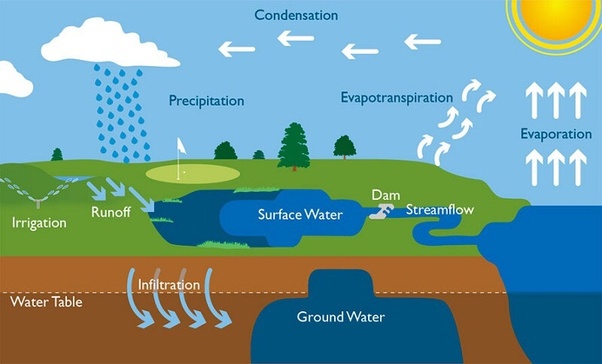Syllabus for CBSE Class 10 Japanese 2020-21 Session
CBSE Class 10 Japanese Syllabus – Here is the CBSE syllabus 2020-2021 of Class 10 Japanese. This is the new syllabus that CBSE has released for the new academic session. You may read the CBSE Class 10 Japanese syllabus from here. It is necessary for you to analyze this new syllabus before studying new chapters for effective learning and good results in the CBSE Class 10 Board Exam 2021.
Also See: CBSE Class 10 NCERT Solutions
Check CBSE Class 10 Japanese Syllabus 2020-2021 below:
JAPANESE (CODE: 094)
Class-X – 2020-2021
Time: 3 hrs.Marks: 80
A) Reading ComprehensionSection: 20marks
A:1 Reading comprehension of the short passages/ conversations/ stories related to Syllabus Lesson 1-12 (unseen passages-4-5 ,MCQ)
Short answer questions 10×1 10 marks
MCQ (True or false/odd one out/ match the following 10x1⁄2 05 marks
Fill in the blanks) 10x1⁄2 05 marks
B) Writing Section: 20 Marks
Simple paragraph/essay writing on the topics “My Teacher ” “My Friend” My School” in about 350 characters. ( any 2/ 3for final exam ) .
Letter to your grandfather talking about your Japanese language studies and a trip to the zoo in about 300-350 characters.
Complete dialogues, written passages ( choice words, incomplete passages/ conversations to be given related to syllabus).
Criteria assessment of the writing section :
Marks for Logical cohesion and construction Marks for use of correct grammar and vocabulary– (excellent/very good/good/limited/ poor)No marks to be deducted for spelling mistakes.
C) Grammar Section: 20 marks
Based on the prescribed textbook (Lessons 1-12)
All particles, counters, verbs conjunctions, demonstrative pronouns, place, adverb, idioms and vocabulary, animate, inanimate, verb conjugations, tenses, verb meanings, giving/receiving, adjectives, question words, comparisons.
D) Script KANJI: 20 Marks
1st 6 chapters of NIHONGO CHALLENGE BOOK ( kanji 1-60 N 5)
Must be able to read and write all kotoba listed in the book with the kanjis
Prescribed textbook: MinnanoNihongoIndianedition1-1: textbook cum workbook, grammar notes, audio CD. Textbook Lessons 1-12 AND NIHONGO CHALLENGE KANJI BOOK
The Question Paper will be divided into four sections: Time: 3 Hrs.
Section – A: Reading Comprehension Section – B: Writing
Section – C: Grammar
Section – D: Script( KANJI)
Section-wise weightage:
Section
Details of Topics/Sections
Marks
| Section – A (Understanding, analyzing ) | 3-4 Unseen prose passages (related to syllabus/ lessons) | Short answer questions
Vocabulary Search: Noun and verb forms/opposites/find the odd one /adjectives/adverbs., match the following True or False – context or theme based |
10 05
05 |
| Section – B (Creating) | Any 2 Long compositions/essay (informal letter – around 350 characters )
Letter to your grandfather talking about your Japanese language studies and a trip to the zoo in about 300-350 characters. Complete dialogues, written choice passages/ passages words, incomplete conversations – related to syllabus |
Creative long answers
Creative writing Creative writing with correct vocabulary ( appropriate words ) |
10
05 05 |
| Section – C (Application) | Grammar | Particles
は、の、も、に、で、から、まで、と、 Pronouns 、Time N place、N をします あげます、もらいます あります、わかります すき、じょうず、きらい、へた あります、います。NやNやなど ALL QUESTION WORDS lesson 1-12 Counters/ quantifiers、numbers, types of counting Nouns, adjectives, verbs, adverbs, – ALL TENSES |
05
05 05 05 |
| Section – D (Remembering ) | KANJI | KANJI TO HIRAGANA HIRAGANA TO KANJI | 10 10 |
| Total Marks | 80 |
JAPANESE (CODE: 094)
Class-X 2020-21
Time: 3Hrs Marks:80
A) Reading Comprehension Section: 20 Marks
A:1Reading comprehension of the short passages/ conversations/ stories/ notice, related to syllabus Lesson 13-20 (unseen passages-4-5 ,MCQ)
Short answer questions 10×1 10 marks
MCQ (True or false/odd one out/ match the following 10x1⁄2 05 marks
Fill in the blanks) (Any 2) 10x1⁄2 05 marks
B) Writing Section: 20 Marks
Simple paragraph/essay writing on the topics “My weekend ” “Holi ” “ sports” Insta / chat in plain form with your friend on the following topics –
in about 200 characters. (Any 2 /3 in the final exam ).
| 1. さいきん みた えいが
2. レストランで たべた にほん りょうり 3. すきな はいゆう 4. にほん の あたらしい おみせ 5. しあい 6. がっこうの せんせい |
Complete dialogues, written passages ( choice words, incomplete passages/ dxconversations to be given related to syllabus).
Criteria assessment of the writing section: Marks for logical cohesion and construction Marks for use of correct grammar and vocabulary(excellent/very good/good/limited/ poor). No marks to be deducted for spelling mistakes
C) Grammar Section: 20 marks
Based on the prescribed textbook (Lessons 13-20)
ほしい、たい、N -PLACE へ いきます、かえります、きます、どこか、なにか、 Particles, verb conjugations, te form, seeking/ granting permission, present continuous, しりません、adjectives conjugations (and), から、Vない、please don’t, must, ok if you don’t, potential, can do, before, after, have had the experience, たりたりします、になります、proper use of the plain and polite style with the conversation , all question words, adverbs.
D) Script KANJI 20 marks
Chapters 7-11of NIHONGO CHALLENGE BOOK ( kanji 61-110 N 5)
Must be able to read and write all kotoba listed in the book with the kanjis
Prescribed textbook: Minnano Nihongo Indian edition1-2: textbook cum workbook, grammar note, audio CD. Textbook Lessons 13-20 AND NIHONGO CHALLENGE KANJI BOOK
JAPANESE (CODE: 094)
Class-X
Time: 3Hrs
The Question Paper will be divided into four sections:
Section – A: Reading Comprehension – 20 Marks
Section – B: Writing -20 marks
Section – C: Grammar -20 marks
Section – D: Script – Kanji -20 marks
Section-wise weightage:
| Section | Details of Topics/Sections | Types of Questions | Marks |
| Section – A (Understanding, analyzing) | 3-4 Unseen prose passages (related to syllabus/ lessons) | Short answer questions
Vocabulary Search: Grammar patterns, adverbs, match the following, etc. True or False – context or theme based |
10
05 05 |
| Section – B (Creating) | Any 2 Long compositions (around 350 characters )
. Complete dialogues, written passages ( choice words, incomplete passages/ conversations – related to syllabus |
Creative long answers
Creative writing with correct vocabulary (appropriate words ) |
10
10 |
| Section – C (Application) | Grammar | Desire, Verb conjugation, particles,て ください、てもいい、てはいけませ ん、ています、しりません、Vて form
けいようしーくて/で、V てから ができます、(しゅみは) V dictionary form ことです OR N こ とです、まえに、Vた、ことがあり ます、けいようし-く/になります Proper use of Plain form / polite form in conversation etc Question words and adverbs |
06
03 06 03 02 |
| Section – D (Remembering ) | KANJI | KANJI TO HIRAGANA
HIRAGANA TO KANJI |
10
10 |
| Total: 80 |
INTERNAL ASSESSMENT FOR CLASSES IX-X JAPANESE
| A- Periodic Tests | Total Weightage 10 out of 20 | |
| Tests may be based on grammar/vocabulary/kanji/script | ||
B – Notebook Submission
|
Total Weightage 05 out of 20 | |
| C –Subject Enrichment Activity | Total Weightage 05 out of 20 |
The teacher should assess students on the skills of language learning namely, Listening and Speaking. The assessment should be done on 10 and then reduced to 5 marks. The topics for Listening and Speaking may be taken from the themes of the lessons in the syllabus. The details of this component are as follows:
Total Marks – 5 |
Also See:
- CBSE Class 10 Japanese Syllabus for 2020-21
- CBSE Class 10 Maths Syllabus for 2020-21
- CBSE Class 10 Hindi Syllabus for 2020-21
- CBSE Class 10 Home Science Syllabus for 2020-21
- CBSE Class 10 German Syllabus for 2020-2021
- CBSE Class 10 French Syllabus for 2020-2021
- CBSE Class 10 English Syllabus for 2020-2021
- CBSE Class 10 Science Syllabus for 2020-21





